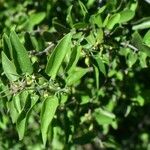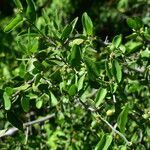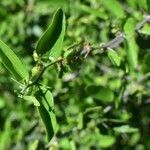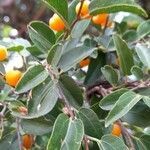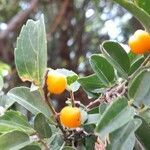Shrubs , to 3 m; crowns rounded. Bark gray, smooth. Branches spreading, flexuous, whitish gray, with thorns, puberulent; thorns single or in pairs, 3-25 mm. Leaf blade ovate to ovate-oblong, to 2-3 × 1.5-2 cm, thickish, margins entire or crenate-dentate, apex rounded to acute; surfaces scabrous. Inflorescences cymes, 3-5-flowered, longer than petiole, flowers mostly staminate on proximal branches, terminal flower bisexual. Drupes orange, yellow, or red, ovoid, 6-7 mm; pedicel 1-2 mm.
